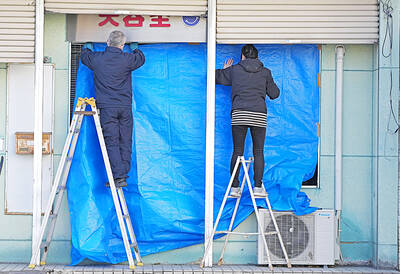The Taiwanese Navy is purchasing hundreds of specialized sonobuoys from the US to augment its anti-submarine warfare capabilities, a US Department of Defense notice said on Friday.
Under the Foreign Military Sale, Taiwan will acquire 440 AN/SSQ-53F sonobuoys for US$335,000, with work scheduled for completion by January 2014 (as part of the same deal, the US Navy is purchasing 49,900).
Sonobuoys, also known as “listening sticks,” are used to detect and identify moving underwater objects.
The AN/SSQ-53F directional frequency and ranging (DIFAR) sonobuoy — the latest-generation passive sonobuoy used by the US Navy — is dropped from fixed-wing aircraft or helicopters and uses four hydrophones that operate at depths of 27m, 60m, 120m and 300m, as well as digital sound processors, to listen for enemy submarines.
Unlike “active” sonobuoys, which locate objects by bouncing a “ping” off a vessel, passive types gather emissions created by moving underwater objects.
Aircraft can drop a pattern of sonobuoys, which relay information back to the aircraft by radio link to determine the exact location of enemy submarines.
In Taiwan’s case, the sonobuoys are likely to be used on the 12 refurbished P-3C “Orion” marine patrol aircraft it has purchased from the US, which are expected to start being delivered this year.
Sonobuoys are designed to determine the direction from which a signal originates. Through triangulation, a pattern of listening sticks can determine a target’s range, bearing and location.
The operational life of a sonobuoy can be set from 30 minutes to eight hours, whereupon the device automatically scuttles itself.
In November last year, Taiwan also ordered 44 AN/SSQ-36s — ocean thermometers used to establish what is known as the “temperature geography.” Water temperature, which affects sonar propagation and acoustic range prediction, tends to vary depending on depth.
Establishing temperatures before launching sonobuoys, such as the AN/SSQ-53F, can therefore ensure optimal performance.
China has at least 65 submarines in its navy’s undersea forces, with four nuclear-powered ballistic missile submarines (SSBN), at least five nuclear-powered attack submarines and 56 conventional submarines.
The Type 094 SSBN, which is equipped with the JL-2 nuclear missile and was launched in 2004, has been of particular concern to the international community.

Taiwanese were praised for their composure after a video filmed by Taiwanese tourists capturing the moment a magnitude 7.5 earthquake struck Japan’s Aomori Prefecture went viral on social media. The video shows a hotel room shaking violently amid Monday’s quake, with objects falling to the ground. Two Taiwanese began filming with their mobile phones, while two others held the sides of a TV to prevent it from falling. When the shaking stopped, the pair calmly took down the TV and laid it flat on a tatami mat, the video shows. The video also captured the group talking about the safety of their companions bathing

US climber Alex Honnold is to attempt to scale Taipei 101 without a rope and harness in a live Netflix special on Jan. 24, the streaming platform announced on Wednesday. Accounting for the time difference, the two-hour broadcast of Honnold’s climb, called Skyscraper Live, is to air on Jan. 23 in the US, Netflix said in a statement. Honnold, 40, was the first person ever to free solo climb the 900m El Capitan rock formation in Yosemite National Park — a feat that was recorded and later made into the 2018 documentary film Free Solo. Netflix previewed Skyscraper Live in October, after videos

Starting on Jan. 1, YouBike riders must have insurance to use the service, and a six-month trial of NT$5 coupons under certain conditions would be implemented to balance bike shortages, a joint statement from transportation departments across Taipei, New Taipei City and Taoyuan announced yesterday. The rental bike system operator said that coupons would be offered to riders to rent bikes from full stations, for riders who take out an electric-assisted bike from a full station, and for riders who return a bike to an empty station. All riders with YouBike accounts are automatically eligible for the program, and each membership account

A classified Pentagon-produced, multiyear assessment — the Overmatch brief — highlighted unreported Chinese capabilities to destroy US military assets and identified US supply chain choke points, painting a disturbing picture of waning US military might, a New York Times editorial published on Monday said. US Secretary of Defense Pete Hegseth’s comments in November last year that “we lose every time” in Pentagon-conducted war games pitting the US against China further highlighted the uncertainty about the US’ capability to intervene in the event of a Chinese invasion of Taiwan. “It shows the Pentagon’s overreliance on expensive, vulnerable weapons as adversaries field cheap, technologically